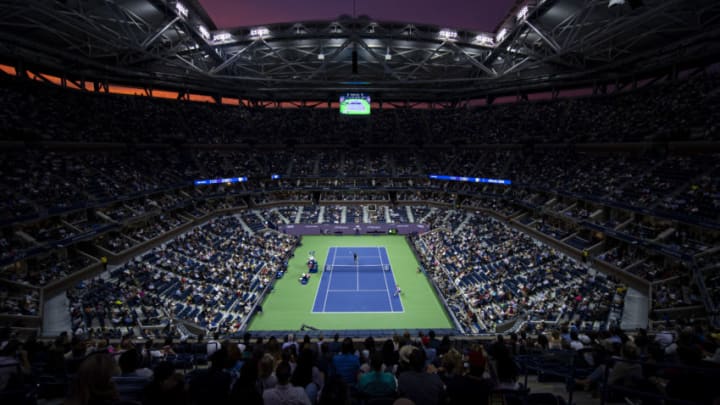Top players may not be in attendance, and both tours are in a state of chaos, but the 2020 US Open winners won’t have an asterisk next to their names.
The word “asterisk” has been thrown around across the sports world as both a comment and jab at the resurrection of sports after the beginning of the Covid-19 pandemic. The question many are asking is if championships and titles in shortened seasons and tournaments are as legitimate as those of the past?
The answer to this question, especially as it pertains to the 2020 US Open, is a resounding “yes!” A title this year should and will count as much as a grand slam in any year past, if not more so.
The challenges faced by players at this year’s US Open are not only daunting, but they are unlike many challenges faced in recent memory, ones that the eventual champions will have had to overcome.
First off, many players have a lack of practice and match play heading to New York. Some have participated in exhibition events, from the disastrous Adria Tour to the exciting UTS events. Even so, the WTA will have four tournaments before the US Open, while the ATP Tour will only have one: the Cincinnati Open. Players will need to both mentally and physically perform at high levels immediately upon their return.
Additionally, the lack of fans will most certainly change the outlook of matches. Strong supporter sections will not be available to shroud their heroes in cheers, while underdogs and late match leaders will have less external encouragement and, perhaps, more internal pressure than ever before. Competitors will truly be alone on the court with only their thoughts to comfort or unravel their own ambitions.
To be fair to detractors and asterisk proponents, there is reason to understand the doubts surrounding the level of this year’s US Open. José Morgado, a journalist and tennis commentator, has tweeted out a list of men and women in the Top 100 who are not participating in the grand slam (a list that continues to grow).
Not playing the US Open (17/8/2020)
— José Morgado (@josemorgado) August 17, 2020
Women
1 Barty
2 Halep
5 Svitolina
6 Andreescu
7 Bertens
8 Bencic
29 Q Wang
30 Pavlychenkova
31 Strycova
32 Kuznetsova
34 Zheng
38 Goerges
44 Ferro
56 Hsieh
74 Zhu
84 Potapova
92 Bogdan
97 Stosur
103 Peng
108 X Wang
115 Krejcikova
134 Hon
Due to concerns regarding Covid-19, players such as Nick Kyrgios and World #1 Ashleigh Barty have opted out of the tournament, and now they have been joined by 2019 US Open winner Rafael Nadal. Others are unable to play due as a result of injury, such as Roger Federer, or due to a combination of the two, like defending champion Bianca Andreescu.
That being said, top players have been unavailable for slams or exited early before. Nadal’s early exits in the 2009 and 2016 French Open’s do not negate Federer and Djokovic’s victories. Nor does Serena’s upset loss at the 2015 US Open negate Flavia Pennetta’s championship. Is Mats Wilander’s 1984 Australian Open thought less of in the present because John McEnroe, then World #1, was absent?
Furthermore, “weak” slam fields have sometimes bred “weak” slam winners, but that does not make them any less of a winner. Yes, Thomas Johansson, Gaston Gaudio, and Anastasiya Myskina may be overlooked and sometimes forgotten, but weak draws and lower-ranked victors does not make their victories any less legitimate.
The trials of the past do not negate nor validate those of the present. They can serve as markers and memories, but, in the end, the main thing that is remembered is whose name is carved into the trophy at the end of each fortnight.
Only time will tell who the men’s and women’s US Open champions will be, but what is known now is that they will hoist the same trophy as their predecessors and have their names etched in tennis history, conquering both opponent and pandemic in the process.
